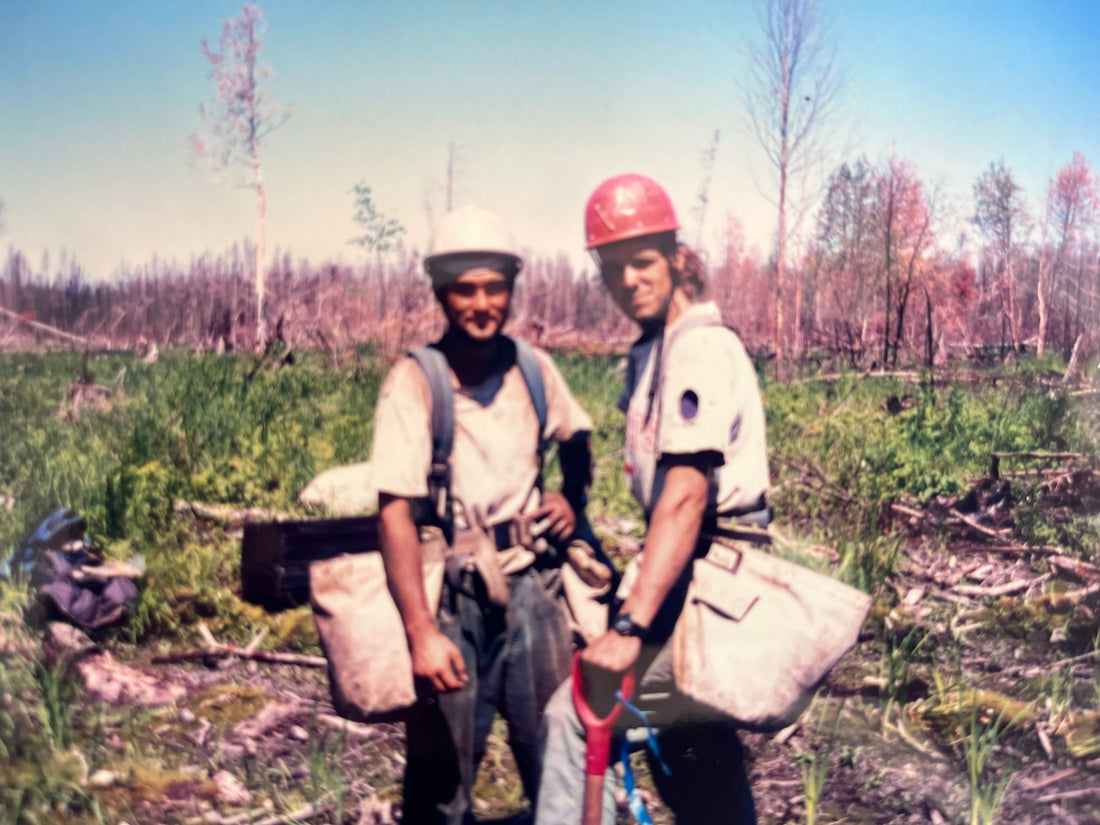At the end of each university year… right around this time… I would put my tent, clothes and bug repellent in a large knapsack and drive 20 hours into Northern Ontario…
To plant trees.
This was how I paid the bills in Uni. Getting paid 10 cents to 25 cents per tree.
There was an “eco” side to it, but it was more about going to a place with friends, and a few bears, where we made money and literally could not spend it.
Forced savings for next year’s tuition, books, rent, and of course - beer and late night donairs.

The photos of young people planting trees way off the grid may make look idyllic.
But the reality?
The bugs were next level madness. MANY people went into melt downs trying to escape the black flies - which was impossible.
Once per week we went into town for a day off and a shower. Yes, one shower per week.
We ate the same thing for lunch every. single. day.
I haven’t had a PB&J sandwich for 30 years.
Sleeping alone in a tent on the ground every night for months gets painful. And there's that one mosquito that always finds its way in.
In some ways it was hellish.
But the interesting thing about the human memory is that over time, it seems to filter out the bad and focus on the good.

I remember campfires every night, and playing guitar if my hands weren’t stuck in the “the claw” - which is the name for what happens to the human hand after holding a shovel for 12 hours a day. I also remember eating 4 Big Macs with a side of cheeseburgers on days off.

So when I heard about AI and flying robots working on reforesting, I was especially interested.
Could robots plant trees faster and better than I could? Yes, I’d bet money on that.
But doing the labour isn’t what AI is actually good at.
Where—and What—to Plant
One of the biggest challenges in tree planting isn’t digging—it’s knowing where and what to plant.
AI is pretty great at that. It can scan satellite images, analyze soil types, consider climate data, and generate a detailed map of exactly where trees should go. Not just any trees—the right trees. Native species that will actually survive, help restore ecosystems, and pull carbon out of the atmosphere.
Drones Doing the Labour
Once the map’s in hand, the real work starts. Only now, it's not a bunch of 20-year-olds with shovels—it’s drones.
Drones can drop seed pods over massive areas, including places you’d never hike into with a shovel. And they adjust on the fly, responding to terrain, wind, and conditions as they work.
No claw hands. No bear sightings. No PB&Js.
Just fast, efficient planting that gives trees a better shot at growing.
A Win for Forests—and the Planet. But a loss of jobs.
I do worry about job loss and the impact AI is having already on our workforce.
In the case of tree planting, however, I ask myself this:
“Would I want my kids doing what I did… damaging their hands, wrists and back by hammering a shovel into the ground for 12 hours a day, not showering for a week, sleeping in a tent in the bush where there are bears?”
It builds character, they say.
But still, no, I don’t think so. This is a job that robots can do better than humans.
On the other hand, for the generations that spend more time on their phones than outside, some hard work with no cell reception could be a good thing.
What do you think? Please let us know in the comments. We'd love to hear from you.
Jamil - guy on the left and Founder of Weightless Clean.


